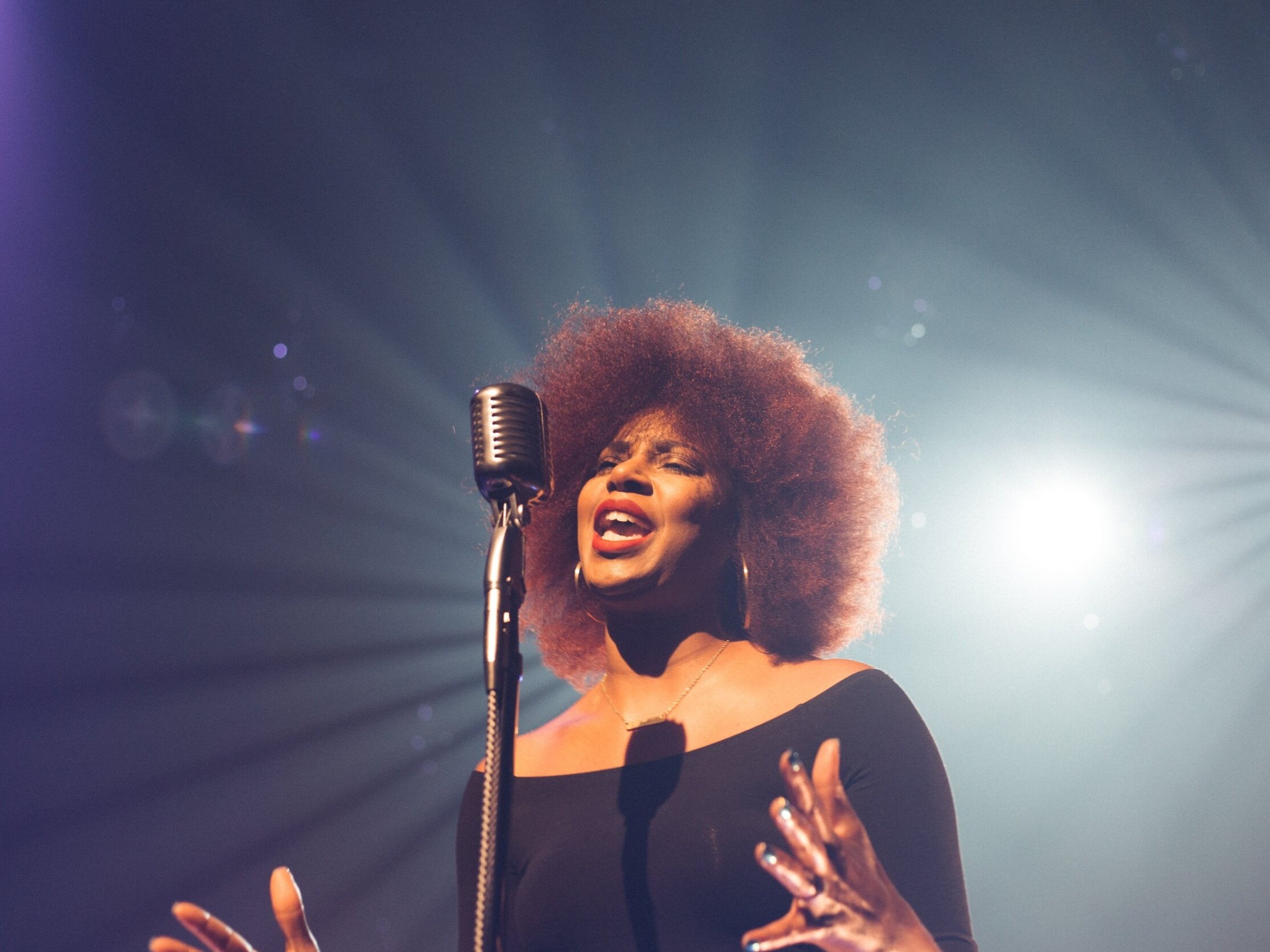The Austin Music Scene: A Gentrifying Community Hangs on for Now

Austin is home to countless musicians, aspiring and otherwise. While many famous musicians make it their home away from home, few local musicians can make it at all. With cost of living ever on the rise, Austin’s music scene is less about “making it” and more about surviving. Gentrification is a dirty word to most who can barely — or can’t — afford to live in the cities that they’ve known their whole lives. At the same time, a profitable word for developers, companies, and savvy business people who see dollar signs where communities once stood. It’s nothing new, this form of progress has been a heated topic in major cities for decades. Austin seems to have really felt the brunt of it over the last 10-20 years. Eric Hisaw, of the Eric Hisaw band, has been in Austin long enough to see some of the changes firsthand.
“The Austin music scene has endured a significant change over the years from gentrification,” Hisaw explained. “What we know as the scene today, based around the Chronicle, SXSW, and iconic clubs like the Continental, Hole in the Wall and Saxon Pub, is rooted in Austin being a much less expensive place to live than LA or New York.”
While Austin music festivals are a big draw for tourists, the so-called Live Music Capital of the World began its notoriety in the ‘60s and ‘70s.
“Musicians flocked here in the ‘60s to play frat parties and college bars….the cost of living was low and the drug laws were more lax than anywhere in Texas, because so many influential politicians and businessmen had children attending UT,” Hisaw elaborated. Along with this new batch of musicians looking for something different, were the locals playing in venues all over the city. They played everything from blues, country, jazz, rock, Tejano, and what have you. It was “a vibrant music scene…that might today be called roots music or Americana'' according to this KUT article. Once Austin adopted The Live Music Capital of the World moniker in 1991, it seems like everyone around the country went along with it.
Now, it’s an accepted part of Austin that doesn’t seem to hold up to the spirit it originally claimed. The ever-changing music landscape — both figuratively and literally — has changed the once progressive Austin music scene to a more corporate one. Gentrification’s part in that appears to be in the literal landscape change. Hisaw maligned the developers, “over the years as Austin has become a trendy place to live, the demographics have changed, and once affordable neighborhoods are now a competitive commodity for investors [to] trade on the idea of Austin being a ‘hip and cool’ place to live and are able to sell it to people who have no real connection to the musical culture.”
Skyscrapers for Silicon Valley companies, parking lots, and high-rise condos now stand where important Austin venues once stood. Names like the Soap Creek Saloon, Armadillo World Headquarters, and Skyline Club bring back memories for those who were around to catch legends like Stevie Ray Vaughn.
An Austin Chronicle article from 2001 details the impact Soap Creek Saloon had on the Austin music scene, and the music fans that used to flock to it. “The Austin of that era had a charm and sense of community that's revered by many, but largely missing today,” Margaret Moser wrote. Nearly two decades later, that sentiment is still true, even for transplants to the city. Local Shannon Lavine remembers when the scene “used to be more intimate,” when you could see “big acts in small venues; now it seems more business.”
Austin has become a launchpad for various music festivals over the years, but as bigger names are brought to the bill, more and more local artists are being left to fend for themselves. Photo by Nick Bailey
The music business has seen several changes in the past 20 years. With technology changing the way we consume music, artists are finding it even harder to make money from record sales alone. On the flip side, this change has allowed increasingly more artists to get the exposure they need to reach a larger audience. All and all, touring has become too important to a musician’s livelihood and cultivation of a fanbase. As Austin deals with festivals ending and venues closing due to “rent increases of nearly 50%” just four years ago — according to this 2015 Pitchfork article — you have to wonder, where will these artists be playing in 10 years? Will we see Stubb’s move south like Emo’s did in 2011? Will the Red River Entertainment district become a series of high rises with a Whole Foods on the ground floor? Hopefully not, but if these venues and clubs can’t afford to stay in business, how can the local musicians afford to stay here?
Nathan Olivarez — another veteran Austin musician, television host, and writer — counts technology among a number of factors affecting the community. With 30 years of experience on the scene, he remembers when “bands used to share gear and see each other’s shows, we used to help each other.” Olivarez has two bands, Stupid Drama, an acoustic rock outfit, and Dancyr, a metal band. Known for their live shows, the guitarist laments how he doesn’t “think people think it’s important to see live music”, it’s “harder to get people to shows.” If it’s harder to get people to see shows, it is inevitably harder to make money on shows. He reveals that there is often “no wage, unless you hustle the wage,” and with less people attending, there is less take home from bar sales. On top of that, he touched on the city’s “growing pains” affecting the safety for audiences. The increase in crime “makes it harder and harder to keep people safe, and makes it dangerous for people to see shows.”
The Austin Music Census from 2013 shows a decline in income for the Austin music scene, “local venues and musicians receive lower overall financial support from Austin patrons…and the large scale events are not making up for that shortfall for local musicians.” Combine that with the results of the University of Texas’s gentrification study, and the future looks bleak. In their study, Uprooted: Residential Displacement in Austin's Gentrifying Neighborhoods, and What Can Be Done About It, researchers determined what most of us already knew. “Compared to even 20 or 30 years ago, a higher share of disadvantaged people in Austin are in locations that are distant from the various economic, cultural, and other opportunities offered by Austin’s urban core …The stages of gentrification ripple out from downtown Austin, with Continued Loss tracts lying immediately to the east and south, and with…earlier stages of gentrification as one proceeds away from downtown to the north, east, or south.”
It should come as no surprise that capitalism and creativity are at odds for the soul of the city, but as more luxury apartments open their doors while long-standing music venues close theirs, Austin may just become another mediocre city, catering to tech bros and venture capitalists. Photo by Nick Bailey
Vocalist Ange Kogutz has worked her way to being a full-time musician; a vocalist in the wedding band, Matchmaker Band, and her soul/r&b/funk band. Having worked in music ministry initially and playing “very few club gigs” on the eastside, she hasn’t felt the effects of gentrification like other artists, but she recognizes the impact it has had on Austin.
“I entered the local industry too late, I believe, to have experienced the presence of an abundance of what we'd call ‘black’ clubs, and then observe the clubs ultimately shut down due to gentrification,” Kogutz said. “The wedding industry, which is where the bulk of my work comes from, doesn't seem affected by gentrification in Austin.” However, the lack of clubs that cater to soul and r&b affects her solo work. “I have observed there doesn't really seem to be a venue just for the demographic who would best relate to what I'm bringing, unless I go all the way to Pflugerville.”
According to the census, 10.4% of musicians were Hispanic, 4.4% were African American, and 32.7% of Austin musicians made less than $15,000 a year. With CBS Austin reporting that the cost to live comfortably in the city is around $55,000 a year, a large portion of Austin musicians are just eking by. “Being a musician always has its many hardships, though ultimately, it has been the working class—who have seen their jobs devalued and their neighborhoods bought up—who have suffered the most,” Hisaw believes. “Many Austin musicians have no access to health insurance or basic health care. They often work multiple jobs and struggle to pay for food, clothing, and shelter with nothing left for healthcare.” The idea of the starving artist is romanticized as what an artist must go through before they get their big break. But the reality is, there is nothing romantic about wondering if you are going to be able to afford your next meal.
While venues like Emo’s are adapting to change, many smaller venues are struggling to keep a balance of local artists and mainstream names while being financially viable. Courtesy photo
This change in an overall community feel of the good ‘ole days and the certain displacement of musicians, doesn’t mean there isn’t a community at all. Every year the Austin Music Awards recognizes the work of local industry professionals and musicians. The event raises funds for HAAM, the Health Alliance for Austin Musicians, and the SIMS Foundation; both necessary to the well-being and quality of life of working low-income musicians.
You can still see live music any night of the week in a myriad of venues; from restaurants and bars to libraries and City Hall. Local artists like Tamecca Jones, White Denim, and Abhi the Nomad are making waves, along with the likes of Gary Clark Jr. and Shakey Graves. Although some residents may not like it, the Red River District is holding on. Last year, the City Council approved an ordinance to extend how long the clubs could play music. By extending the curfew, the council gives places like Cheer Up Charlies and Mohawk more of a fighting chance to combat encroachment.
“The cost of living is pushing people who have long been creative forces out of Austin. This leads to a lack of diversity and uniformity of perspective that leaves a once unique community sounding like any other town,” commented Hisaw. Despite this, Austin’s image among music lovers outside of the city isn’t in question; thousands flock to the city every year for various festivals and events. But the commercialization has certainly changed its image for those who knew it — even just 10 years ago. Austin has a gentrification issue disproportionately affecting Hispanic and African-American residents. There is a diverse group of genres played in the city now, but in time who plays that music and where is likely to be as diverse as an episode of Girls.
Shade is a pop culture enthusiast with a love of all things music, especially the 80s. With eclectic music tastes, she’s seen everyone from the Simón Bolívar Symphony Orchestra to George Clinton and Parliament Funkadelic. One of the highlights of her life is going to Iceland to cover a music festival. If you see her at a concert, see if you can convince her that Backstreet Boys was better than *NSYNC.









